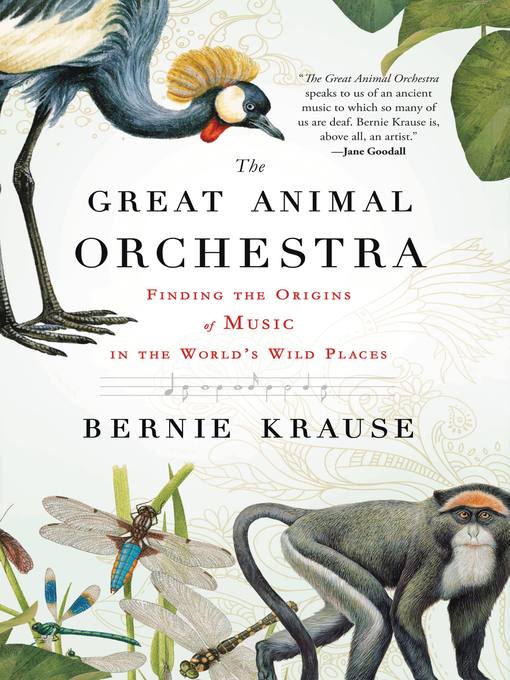
The Great Animal Orchestra
Finding the Origins of Music in the World's Wild Places
کتاب های مرتبط
- اطلاعات
- نقد و بررسی
- دیدگاه کاربران
نقد و بررسی

January 23, 2012
This memoir of sonic investigation highlights the lessons learned from 40 years of listening to the world’s biophonies—the sounds of living organisms. Musician and naturalist Krause (Wild Soundscapes: Discovering the Voice of the Natural World) uses the language of music to understand everything from birdsong, to ocean waves, to decimated habitats, relying perhaps too heavily on the experiences of Native peoples to answer his questions about the origins of music, especially how the sonic structure inherent in biophany impacted human expression to take the form of music. While Krause notes competing theories on music’s evolution and makes a clear case for nature’s ongoing influence on contemporary composition, the origins of music are never found. Instead, Krause’s musical expertise allows him to hear the orchestral layering of different species in each biophony, an insight that explains group vocalization as an evolutionary survival mechanism rather than a purposeful chorus of noise. As Krause discovered early in his career, his body of work unintentionally revealed “the state of biomes that have rendered ecologically transformed through human intervention.” Photos.

February 15, 2012
Krause (Wild Soundscapes: Discovering the Voice of the Natural World, 2002, etc.) chronicles his experiences with "[n]atural soundscapes...the voices of whole ecological systems." A professional musician since 1964, the author became fascinated with the possibilities created by modular synthesizers. He moved to California where he conducted workshops in electronic music and worked as a sound engineer for film studies, providing sound background for Rosemary's Baby, Apocalypse Now and other films. He also recorded In a Wild Sanctuary, "the earliest musical piece to use long segments of wild sound as components of orchestration, and also the first to feature ecology as its theme." Krause learned to use stereo headphones, microphones and a portable recording system to record natural scenes, and he often recorded scenes at varying distances, tuning to different acoustic levels and frequencies to re-create an auditory image of a scene without the aid of visual cues, which ordinarily assist our hearing by screening out certain sounds while focusing on others. In this way he created a "soundscape" of a particular location. He captured the organ-like sounds of reeds and wind in northern Oregon, and his first scientific commission, after he received a doctorate in bio-acoustics, was the sound background for an exhibit of a waterhole in Kenya. In the years since, Krause's study of different habitats has led him to conclude that "creatures vocalize in distinctive kinship with another," each establishing its own sound niche and creating the rhythms of "the natural world." An imaginative introduction to a new dimension of the natural world.
COPYRIGHT(2012) Kirkus Reviews, ALL RIGHTS RESERVED.

May 15, 2012
Musician and naturalist Krause (Wild Soundscapes: Discovering the Voice of the Natural World), whose interest in the relationships of sounds to music led to a Ph.D. in electronic music, has long been recording the sounds of ecosystems, or soundscapes. Drawing on ethnomusicology research, Krause tells a compelling story of how cultures reflect their environment in their music, from the nomadic Ba'Aka, who live in forest regions of the Central African Republic, to composers Bela Bartok and Olivier Messiaen. Using sophisticated recording equipment, ecologists create sound profiles that enable better pictures of biodiversity, changes in the landscape, and the complex interactions of organisms. Using sonograms to illustrate his argument, Krause describes how the effects of manufactured sounds, particularly from engines, on individual participants of the soundscape can lead to disaster, e.g., stranded whales. He compellingly presents the extent of the damage that ever-present mechanical noise has on a broad array of organisms. VERDICT Drawing together ecology, human-created environmental change, and the beauty of nature and music, Krause presents a perspective of our world that will bring readers a new awareness of their environment. Highly recommended for music lovers, naturalists, and students of anthropology.--Sara Rutter, Univ. of Hawaii at Manoa, Honolulu
Copyright 2012 Library Journal, LLC Used with permission.

























دیدگاه کاربران